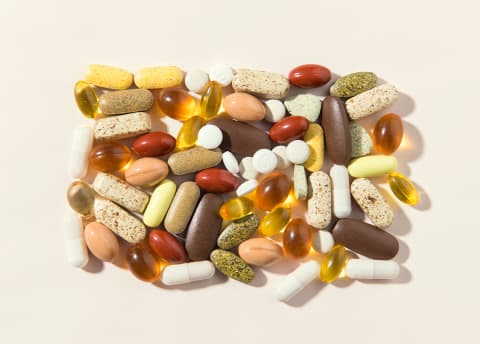
Hate to break it to you, but if you're an adult, you've probably got some sun damage. Whether it's a surprise sunburn (ugh) or the golden tan you're bringing back from vacay, the cumulative effects of sun overexposure are actually similarly harmful and long-lasting, and they're more than skin deep.
What's so bad about a summer tan?
First off, it's important to understand how exactly sun damage happens. There are two types of ultraviolet (UV) rays1 that reach the earth: UVA and UVB. (A third, UVC, is blocked by the ozone layer.)
Think of the long-wavelength UVA as the tanning ray—it penetrates the deeper layers of the skin, into the dermis. The shorter-wavelength UVB is more of the sunburn ray—it doesn't hit past the epidermis. But both UVA and UVB rays do damage and can lead to premature aging, dry skin, discoloration, wrinkles, and an increased risk of skin cancer.
And while everyone is susceptible to sun damage and its visible effects, it's worth noting that the fairer your skin, the greater your risks. That's because melanin, a pigment that gives skin its color, helps block UV rays in folks with olive and darker skin tones.
What sun damage can look like.

It's not just about forgetting to slather on the SPF (truly, sun protection is the first rule of skin care). The signs of sun damage can range from mild to severe, especially if left unchecked and untreated over time. Here are some of the most common signs of sun damage:
- Sunburns. This one's obvious. The redness, pain, and warmth your skin feels after excessive sun exposure is, in fact, a first-degree burn. Blisters mean you've got a second-degree burn. Though uncomfortable (and itchy!), sunburns don't usually last more than a few days, but they can add up to skin problems later in life.
- Freckles. We know them as the cute small spots on our face and body, but freckles are technically an overproduction of melanin thanks to UV stimulation (and a bit of genetics, too), which is why they appear more prominent after a day out in the sun and tend to fade in the winter months.
- Age spots. Larger brown spots that are freckle-ish but don't fade are called age spots, sun spots, or solar lentinges2. These usually show up on the areas that get the most sun and tend to get darker with age. They're not cancerous, but they're something to keep an eye on: Tell your doctor if you notice changes in texture, shape, or color.
- Wrinkles. Laugh lines, crow's feet—call it what you will, but wrinkles can appear prematurely thanks to excessive time in the sun, which frays the fibers that keep your skin firm and elastic3 and speeds up the aging process. Over time, this damage shows up as sagging, crepey, wrinkled skin.
Other signs aren't as easy to spot. A dermatologist can examine you from head to toe to look for clues of sun damage, but don't hesitate to see your doc if you notice any out-of-the-ordinary changes like irregular pigmentation and new moles.
Damage control you can do right now.

The bad news is that you can't completely undo sun damage. But thankfully, there are a few steps you can take to mitigate its negative effects.
For the milder, more immediate effects of sun overexposure, like a burn, look to cold compresses, anti-inflammatories, and soothing moisturizers like aloe vera to help repair the skin and get some relief.
Treating the longer-term effects of sun damage, including uneven pigmentation and wrinkles, is more difficult, but you've got some options. Dermatologists recommend vitamin A—specifically retinol, which is a derivative of the vitamin—as the gold standard for treating signs of premature aging for its role in encouraging cell turnover and increasing collagen production. Exfoliating, microdermabrasion, and laser treatments are also used to reduce the appearance of spots.
You can also up your intake of glutathione—aka the "master antioxidant" as the medical field calls it. Our bodies rely on glutathione to protect, fight, and repair our cells from damage caused by everyday toxins and free radicals, but as we age, we produce less and less of it.
According to one study, supplements that contain Setria®Glutathione as an active ingredient have serious anti-aging cred4 (read: reducing wrinkles), which makes sense given glutathione's key role in supporting skin cells when damaged. The study also showed4 that Setria® may help with skin brightening. To find this specific branded ingredient, look for the Setria logo on the supplement bottle—Bluebonnet's Beautiful Ally® Hair Skin & Nails Formula is just one supplement that packs in Setria®Glutathione among super nutrients like biotin, collagen peptides, and keratin for supporting the health of your skin.
All this is to say, of course, that there's no better way to deal with sun damage than with basic prevention. Again, rule No. 1: Always wear sun protection.
These statements have not been evaluated by the Food and Drug Administration. This product is not intended to diagnose, treat, cure, or prevent any disease.
